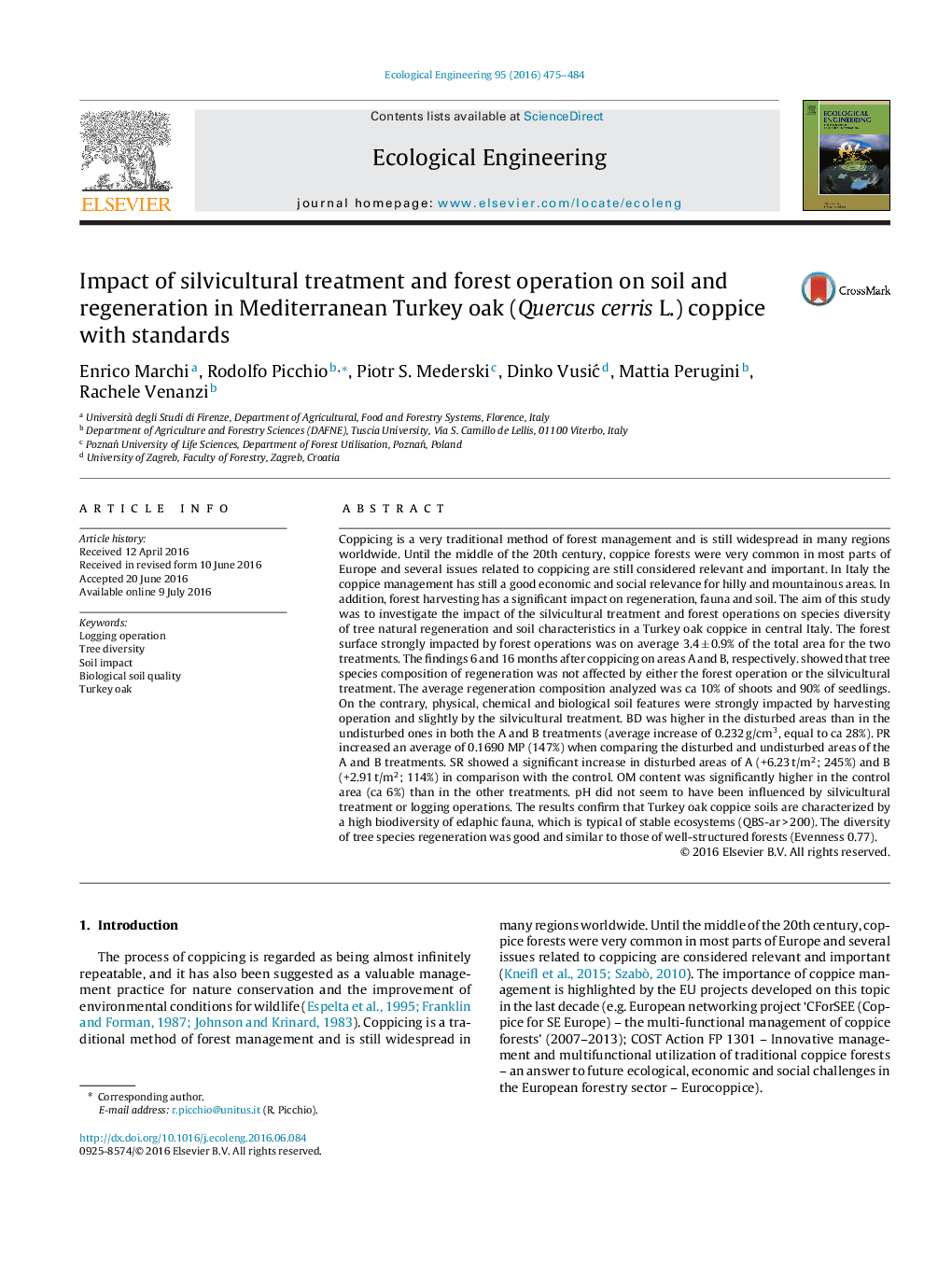| Article ID | Journal | Published Year | Pages | File Type |
|---|---|---|---|---|
| 4388474 | Ecological Engineering | 2016 | 10 Pages |
•Physical and chemical soil features were impacted slightly by silvicultural treatment applied and strongly by logging activities.•Microarthropods soil communities were impacted only by specific logging activities in a coppice forest.•In this coppice forest tree species composition of regeneration was not impacted by silvicultural treatment or harvesting operations.•This study demonstrated that in about 15 years there was a good recovery of the soil conditions in a coppice forest.•In this coppice forest, harvesting operation affected physical, chemical and biological soil features on about 4% of harvested area.
Coppicing is a very traditional method of forest management and is still widespread in many regions worldwide. Until the middle of the 20th century, coppice forests were very common in most parts of Europe and several issues related to coppicing are still considered relevant and important. In Italy the coppice management has still a good economic and social relevance for hilly and mountainous areas. In addition, forest harvesting has a significant impact on regeneration, fauna and soil. The aim of this study was to investigate the impact of the silvicultural treatment and forest operations on species diversity of tree natural regeneration and soil characteristics in a Turkey oak coppice in central Italy. The forest surface strongly impacted by forest operations was on average 3.4 ± 0.9% of the total area for the two treatments. The findings 6 and 16 months after coppicing on areas A and B, respectively. showed that tree species composition of regeneration was not affected by either the forest operation or the silvicultural treatment. The average regeneration composition analyzed was ca 10% of shoots and 90% of seedlings. On the contrary, physical, chemical and biological soil features were strongly impacted by harvesting operation and slightly by the silvicultural treatment. BD was higher in the disturbed areas than in the undisturbed ones in both the A and B treatments (average increase of 0.232 g/cm3, equal to ca 28%). PR increased an average of 0.1690 MP (147%) when comparing the disturbed and undisturbed areas of the A and B treatments. SR showed a significant increase in disturbed areas of A (+6.23 t/m2; 245%) and B (+2.91 t/m2; 114%) in comparison with the control. OM content was significantly higher in the control area (ca 6%) than in the other treatments. pH did not seem to have been influenced by silvicultural treatment or logging operations. The results confirm that Turkey oak coppice soils are characterized by a high biodiversity of edaphic fauna, which is typical of stable ecosystems (QBS-ar > 200). The diversity of tree species regeneration was good and similar to those of well-structured forests (Evenness 0.77).
